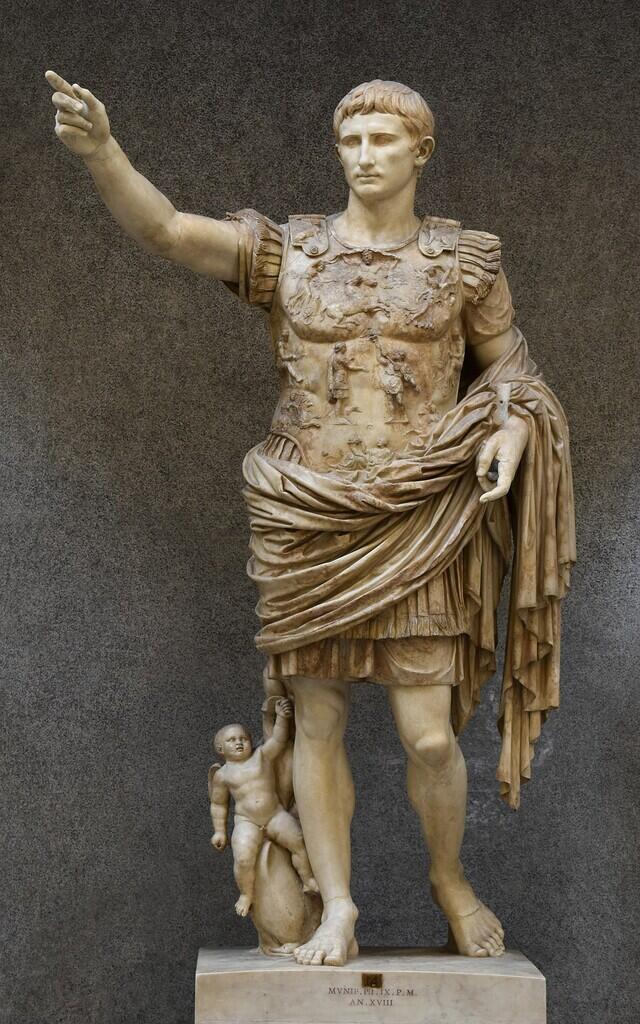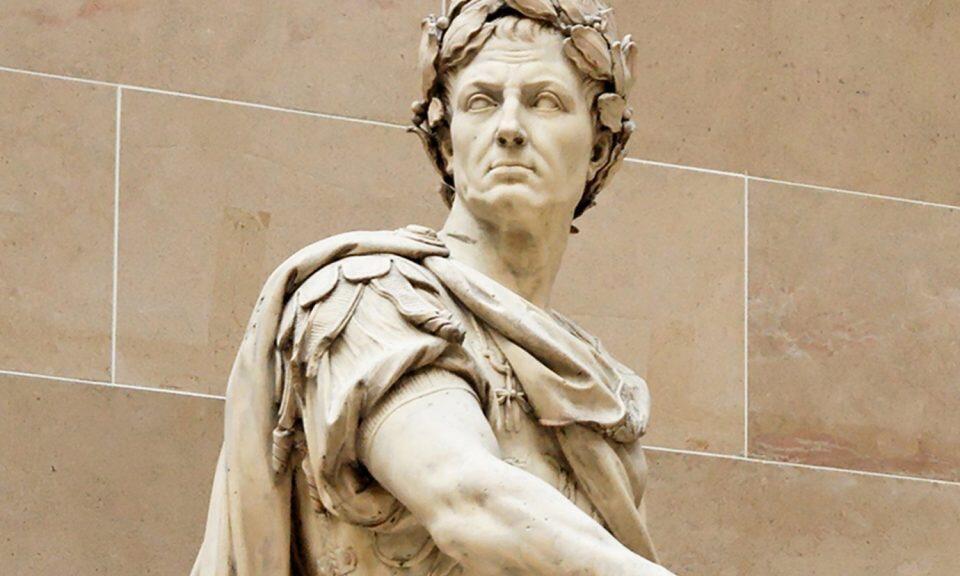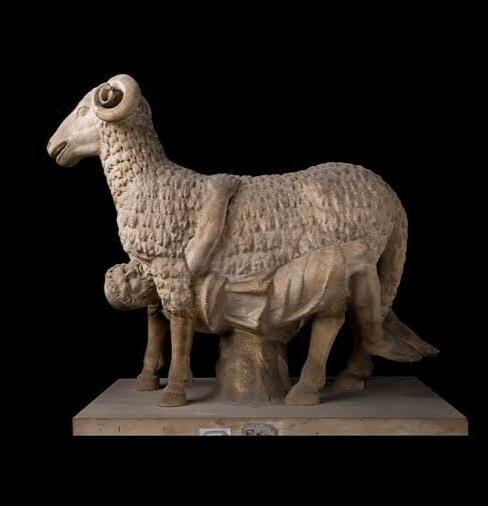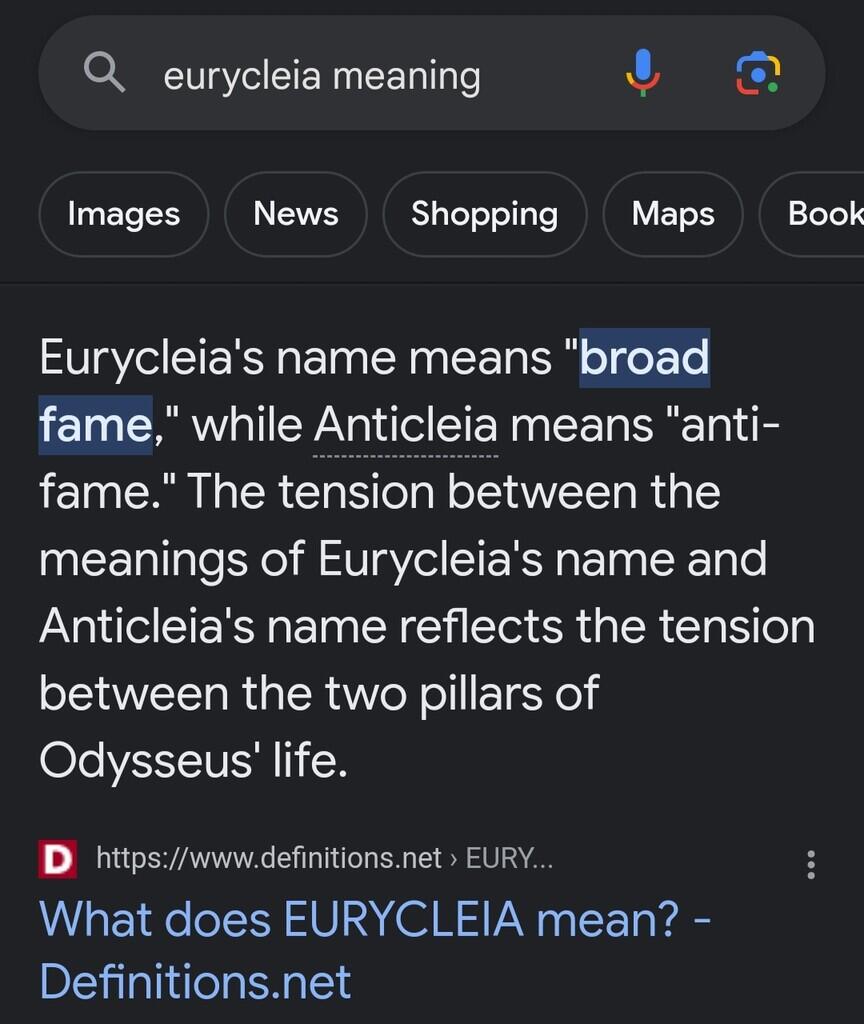- Beranda
- Sejarah & Xenology
alkitab PB dan mitologi greco-roman
...
TS
dispenserr
alkitab PB dan mitologi greco-roman
justyn martyr,salah satu apologetik kekristenan plg awal menulis : "apabila ada kesamaan antara kekristenan dengan kisah pagan,itu adalah upaya setan utk membingungkan manusia,ini dikarenakan penulis2 agama pagan familiar dengan tulisan2 yahudi"
tentu kita bertanya tanya apa yg dimaksud justyn martyr,TS akan tulis sepegetahuan TS
dennis r macdonald,Profesor perjanjian baru dan sejarah asal mula kristen pada sekolah teologi claremont di California pada tahun 90 dan 2000an menulis berbagai buku perbandingan kisah2 epic yg ditulis homer dengan kisah yesus di perjanjian baru,secara spesifik injil sinoptik markus dan kisah para rasul.
macdonnald mengambil beberapa contoh:
*macdonnald secara khusus hanya membandingkan homeric epic dengan injil markus
kisah oddyseus dan cyclops dibandingkan dengan yesus mengusir roh jahat di gerasa
kisah oddyseus dibasuh kakinya dengan yesus yg dibasuh kakinya(diurapi)
selain contoh dua kisah diatas,msh byk comparative myth yg ditemukan macdonald seperti baik oddyseus-yesus sm2 tekton/tukang kayu(oddyseus membuat patung kuda troya),dll
argumen macdonald mendapat dukungan scholar PB lain seperti robert m price yang jg meyakini byk elemen elemen mitos dunia greco roman dalam PB.menambahkan,m price dan scholar PB lainnya sdh mencermati kisah kelahiran dan kematian yesus seperti mitologi julius caesar dan anak angkatnya caesar octavianus(augustus)
caesar augustus

ia adalah salah satu kaisar terhebat romawi yg pernah ada,kalau bukan yg terhebat itu sendiri.kekaisarannya mengalami perdamaian yg panjang,kuat,dan makmur,sebagai anak angkat julius caesar,dia membalaskan dendam mendiang ayahnya menghabisi musuh2 ayahnya dan mengangkat ayahnya sebagai tuhan.sementara ia sendiri adalah anak tuhan,son of god,divi filiusdan pax romana,pembawa kedamaian.
Gaius Suetonius Tranquillus,pada bukunya :"The Life of Augustus" menulis bahwa :
menurut julius marathus,beberapa bulan sblm ia lahir,langit memberi tanda,yang diartikan sebagai ramalan bahwa akan lahir seorang raja yg memimpin roma.para senat tidak menyukai hal ini,mereka tidak ingin dipimpin seorang raja,atau kaisar,atau diktator,alasan yg membuat mereka membunuh julius caesar.roma harus menjadi republik.para ibu yg melahirkan anaknya pada saat itu dilarang mendaftarkan kelahiran.
https://lexundria.com/suet_aug/94/r
asclepiedes of mendes di bukunya Theologumena dan jg tulisan suetonius,menulis bahwa ibu augustus yg bernama atia,mengunjungi kuil,tidur dan bermimpi ular menghamilinya.begitu ia terbangun,ada tanda diperutnya yg tidak bisa dihilangkan(divine birth)dan jg ramalan bahwa anaknya akan menguasai dunia.
julius caesar

setelah caesar tewas,augustus, anak angkatnya mengangkat(deification) julius caesar sebagai tuhan,dan tentu saja mitologi kemudian mengiringi kisahnya sebagai makhluk divine.the georgics of virgil,abad pertama,menulis bahwa ketika julius caesar tewas,langit menjadi gelap dan terjadi penampakan orang2 yg telah mati(tulisan dio cassius), keilahian julius caesar jg dipertegas dengan kebangkitannya dr kematian dan terangkat ke surga,seperti yg ditulis Suetonius:
https://www.walksinsiderome.com/blog/becoming-a-god-the-deification-of-julius-caesar/
lanjut bawah
tentu kita bertanya tanya apa yg dimaksud justyn martyr,TS akan tulis sepegetahuan TS
dennis r macdonald,Profesor perjanjian baru dan sejarah asal mula kristen pada sekolah teologi claremont di California pada tahun 90 dan 2000an menulis berbagai buku perbandingan kisah2 epic yg ditulis homer dengan kisah yesus di perjanjian baru,secara spesifik injil sinoptik markus dan kisah para rasul.
macdonnald mengambil beberapa contoh:
*macdonnald secara khusus hanya membandingkan homeric epic dengan injil markus
kisah oddyseus dan cyclops dibandingkan dengan yesus mengusir roh jahat di gerasa
Quote:
kisah oddyseus dibasuh kakinya dengan yesus yg dibasuh kakinya(diurapi)
Quote:
selain contoh dua kisah diatas,msh byk comparative myth yg ditemukan macdonald seperti baik oddyseus-yesus sm2 tekton/tukang kayu(oddyseus membuat patung kuda troya),dll
argumen macdonald mendapat dukungan scholar PB lain seperti robert m price yang jg meyakini byk elemen elemen mitos dunia greco roman dalam PB.menambahkan,m price dan scholar PB lainnya sdh mencermati kisah kelahiran dan kematian yesus seperti mitologi julius caesar dan anak angkatnya caesar octavianus(augustus)
caesar augustus

ia adalah salah satu kaisar terhebat romawi yg pernah ada,kalau bukan yg terhebat itu sendiri.kekaisarannya mengalami perdamaian yg panjang,kuat,dan makmur,sebagai anak angkat julius caesar,dia membalaskan dendam mendiang ayahnya menghabisi musuh2 ayahnya dan mengangkat ayahnya sebagai tuhan.sementara ia sendiri adalah anak tuhan,son of god,divi filiusdan pax romana,pembawa kedamaian.
Gaius Suetonius Tranquillus,pada bukunya :"The Life of Augustus" menulis bahwa :
menurut julius marathus,beberapa bulan sblm ia lahir,langit memberi tanda,yang diartikan sebagai ramalan bahwa akan lahir seorang raja yg memimpin roma.para senat tidak menyukai hal ini,mereka tidak ingin dipimpin seorang raja,atau kaisar,atau diktator,alasan yg membuat mereka membunuh julius caesar.roma harus menjadi republik.para ibu yg melahirkan anaknya pada saat itu dilarang mendaftarkan kelahiran.
3"According to Julius Marathus, a few months before Augustus was born a portent was generally observed at Rome, which gave warning that nature was pregnant with a king for the Roman people; thereupon the senate in consternation decreed that no male child born that year should be reared; but those whose wives were with child saw to it that the decree was not filed in the treasury, since each one appropriated the prediction to his own family."
https://lexundria.com/suet_aug/94/r
asclepiedes of mendes di bukunya Theologumena dan jg tulisan suetonius,menulis bahwa ibu augustus yg bernama atia,mengunjungi kuil,tidur dan bermimpi ular menghamilinya.begitu ia terbangun,ada tanda diperutnya yg tidak bisa dihilangkan(divine birth)dan jg ramalan bahwa anaknya akan menguasai dunia.
"When Atia had come in the middle of the night to the solemn service of Apollo, she had her litter set down in the temple and fell asleep, while the rest of the matrons also slept. On a sudden a serpent glided up to her and shortly went away. When she awoke, she purified herself, as if after the embraces of her husband, and at once there appeared on her body a mark in colours like a serpent, and she could never get rid of it; so that presently she ceased ever to go to the public baths. In the tenth month after that Augustus was born and was therefore regarded as the son of Apollo.Atia too,before she gave him birth, dreamed that her vitals were borne up to the stars and spread over the whole extent of land and sea, while Octavius dreamed that the sun rose from Atia's womb. (Suetonius:94:4)"
julius caesar

setelah caesar tewas,augustus, anak angkatnya mengangkat(deification) julius caesar sebagai tuhan,dan tentu saja mitologi kemudian mengiringi kisahnya sebagai makhluk divine.the georgics of virgil,abad pertama,menulis bahwa ketika julius caesar tewas,langit menjadi gelap dan terjadi penampakan orang2 yg telah mati(tulisan dio cassius), keilahian julius caesar jg dipertegas dengan kebangkitannya dr kematian dan terangkat ke surga,seperti yg ditulis Suetonius:
“He died in the fifty-sixth year of his age, and was numbered among the gods, not only by a formal decree, but also in the conviction of the common people. For at the first of the games which his heir Augustus gave in honour of his apotheosis, a comet shone for seven successive days,rising about the eleventh hour, and was believed to be the soul of Caesar, who had been taken to heaven; and this is why a star is set upon the crown of his head in his statue.”
https://www.walksinsiderome.com/blog/becoming-a-god-the-deification-of-julius-caesar/
lanjut bawah
Diubah oleh dispenserr 12-05-2023 08:22
androidiot dan 2 lainnya memberi reputasi
3
2.1K
34
Guest
Tulis komentar menarik atau mention replykgpt untuk ngobrol seru
Mari bergabung, dapatkan informasi dan teman baru!
Sejarah & Xenology
6.5KThread•10.4KAnggota
Tampilkan semua post
TS
dispenserr
#17
novel chaereas and callirhoe & satyricon liber

adalah salah satu dr 5 novel tertua greco roman yg pernah ditemukan,dimana dari kelima ini,chaereas and callirhoe yg ditulis chariton adalah yg tertua,ditulis di pertengahan abad pertama.
novel romansa chaereas dan callirhoe menarik perhatian dikarenakan memiliki elemen2 kisah yesus yg ditulis di injil blkg an :
The empty tomb story in Chariton's novel Chaereas and Callirhoe is a striking parallel to the empty tomb stories in the Gospels. In both cases, a young woman is buried, and her tomb is found empty a few days later. In both cases, the discovery of the empty tomb leads to a religious interpretation: in Chaereas and Callirhoe, the conclusion is that Callirhoe has been "taken away by the gods," while in the Gospels, the conclusion is that Jesus has been raised from the dead.
The similarities between the two stories are not accidental. Chariton was writing in the first century CE, and it is likely that he was familiar with the Christian tradition of the empty tomb. However, the empty tomb story in Chaereas and Callirhoe is not simply a copy of the Christian story. It has its own unique features, and it is clear that Chariton was using the empty tomb motif to explore his own religious ideas.
For example, in Chaereas and Callirhoe, the empty tomb is discovered by a group of women, who are led to the tomb by a dream. This is similar to the way in which the empty tomb is discovered in the Gospels, but in Chariton's novel, the women are not disciples of Callirhoe. They are simply ordinary women who have been touched by her story. This suggests that Chariton is interested in the idea that the empty tomb can be a sign of hope for anyone, not just for those who are already believers.
Other parallels between Chaereas and Callirhoe and Christian stories include:
* The role of the divine: In both Chaereas and Callirhoe and the Gospels, the divine plays a significant role in the story. In Chaereas and Callirhoe, the gods are responsible for Callirhoe's miraculous survival and her return to her husband. In the Gospels, God is responsible for Jesus' resurrection.
* The theme of resurrection: The theme of resurrection is central to both Chaereas and Callirhoe and the Gospels. In Chaereas and Callirhoe, Callirhoe's resurrection from the dead symbolizes her spiritual rebirth. In the Gospels, Jesus' resurrection from the dead is a sign of his victory over death and his promise of eternal life to his followers.
* The role of women: Women play a significant role in both Chaereas and Callirhoe and the Gospels. In Chaereas and Callirhoe, Callirhoe is a strong and independent woman who is able to overcome many challenges. In the Gospels, women are among the first to witness Jesus' resurrection.
In addition to the empty tomb story, there are other parallels between Chaereas and Callirhoe and Christian stories. For example, both stories feature a miraculous birth, a divine child, and a journey to Egypt.
The empty tomb story in Chaereas and Callirhoe is a complex and fascinating text. It is a work of fiction, but it also reflects the religious and cultural concerns of the first century CE. It is a reminder that the empty tomb motif is not unique to Christianity, and that it has been used in different ways by different cultures to express their own religious beliefs.
paralel makam kosong yesus :

satyricon liber
selain chareas and callirhoe,novel tertua kedua greco roman yg prnh ditemukan adalah satyricon liber..jg dr abad ke 1,lgsg saja ts tampilin paralelnya :

paralel ayam berkokok waktu perjamuan,dimana yesus meramal petrus akan menyangkal dia kelak :

membasuh kaki org yg kelak akan disalib:

ekaristi (memecah roti,memakan tubuh):

anoint,and later crucified
The "Tale of the Ephesian Widow" in the Satyricon bears some similarities to the story of the woman who anoints Jesus' feet with perfume in the Gospel of Luke. In both stories, a woman anoints the feet of a man who is later crucified.
The "Tale of the Ephesian Widow" is a short story from the Satyricon, a fragmentary Latin novel written in the 1st century AD. The story tells the tale of a widow who, after her husband's death, refuses to leave his tomb for five days, even refusing food and drink. On the fifth day, a soldier guarding two crucified corpses comes to the tomb and tries to comfort the widow. When she refuses his offer of food and drink, he tells her the story of one of the crucified men, who was also recently widowed. The widow is so moved by the soldier's story that she agrees to leave the tomb and join him.
last supper
There is a theory that the Gospel of John borrowed from the Satyricon in its account of the Last Supper. This theory is based on a number of similarities between the two stories, including:
* The setting of the Last Supper in the Satyricon is a funerary meal, which is similar to the setting of the Last Supper in the Gospel of John.
* The cock crowing at the end of the Satyricon is similar to the cock crowing at the end of the Last Supper in the Gospel of John.
* The mention of fish in the Satyricon is similar to the mention of fish in the Last Supper in the Gospel of John.
However, there are also some significant differences between the two stories. For example, the Last Supper in the Satyricon is a much more secular event, while the Last Supper in the Gospel of John is a much more religious event.
The theory that the Gospel of John borrowed from the Satyricon is still debated by scholars. Some scholars believe that the similarities between the two stories are simply coincidental, while others believe that the Gospel of John may have been influenced by the Satyricon.
In 2005, a scholar named Emory L. Londale published a paper titled "The Satyricon and the Last Supper: A Comparative Study" in which he argued that the Gospel of John borrowed from the Satyricon in its account of the Last Supper. Londale's paper was met with mixed reactions from scholars, but it has helped to fuel the debate over whether or not the Gospel of John borrowed from the Satyricon.
Ultimately, the question of whether or not the Gospel of John borrowed from the Satyricon is one that cannot be definitively answered. However, the similarities between the two stories do raise some interesting questions about the relationship between the two works.
Diubah oleh dispenserr 08-07-2023 23:58
nite.hime memberi reputasi
1
Tutup


